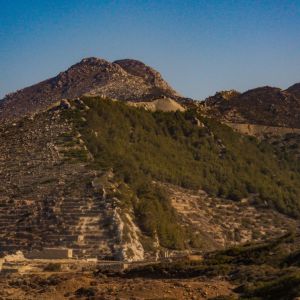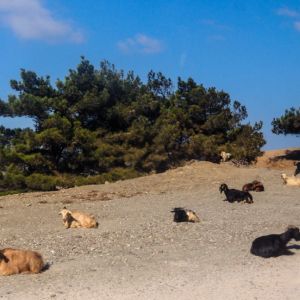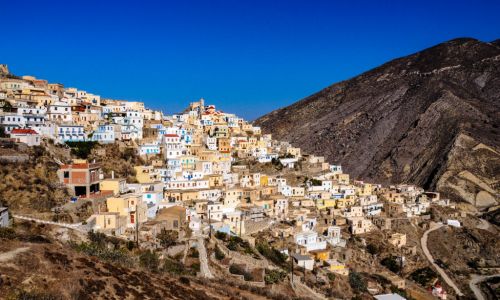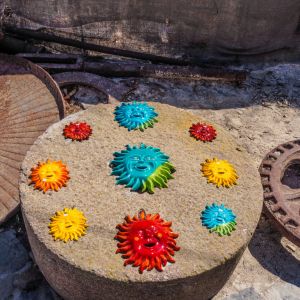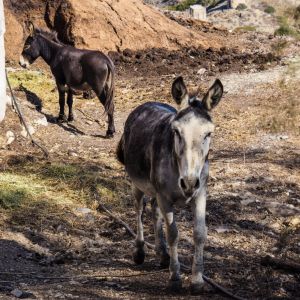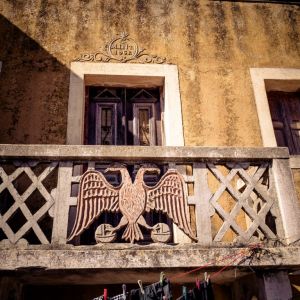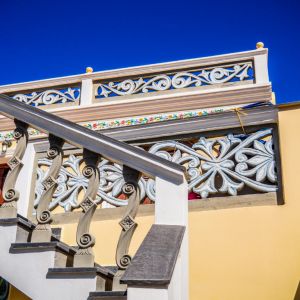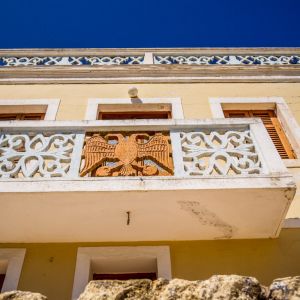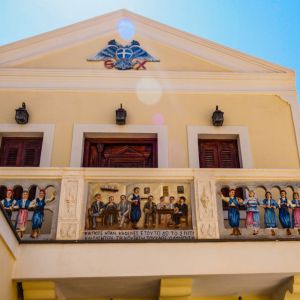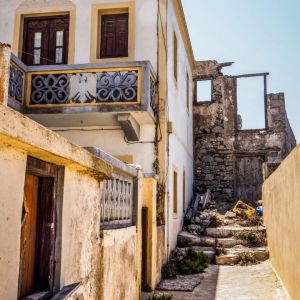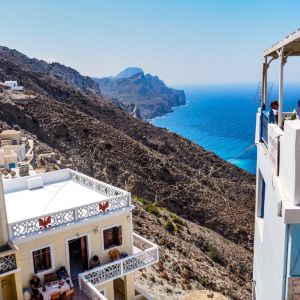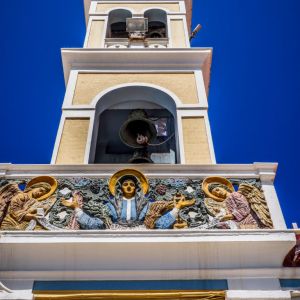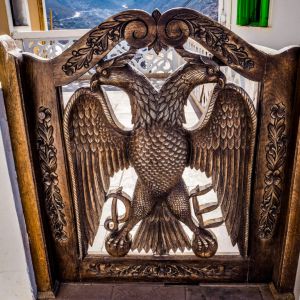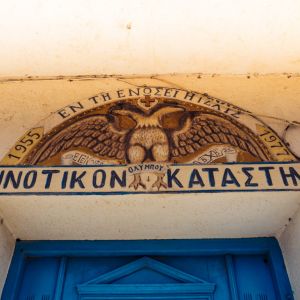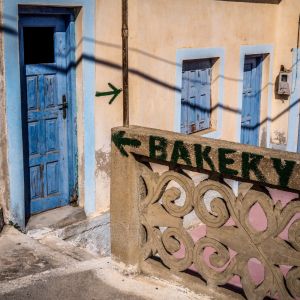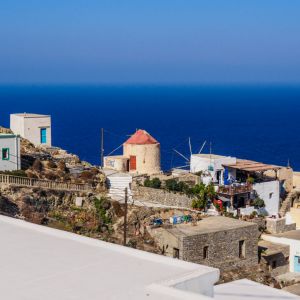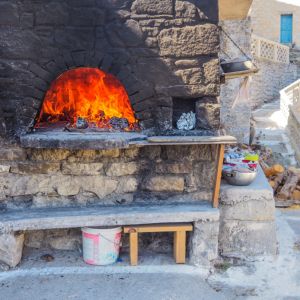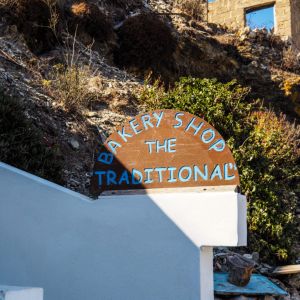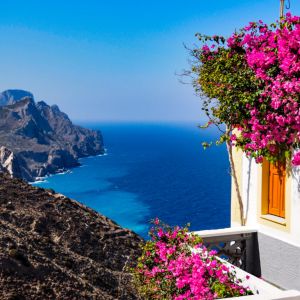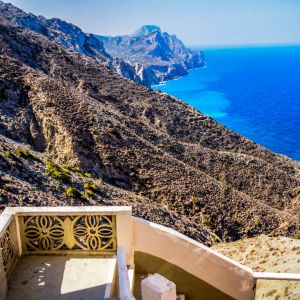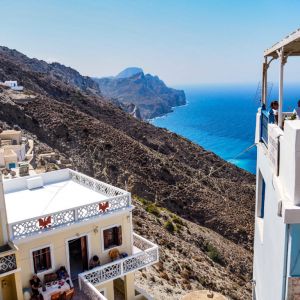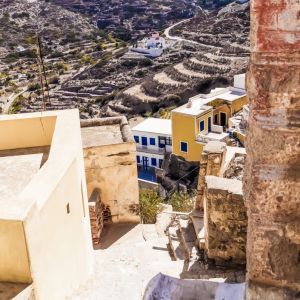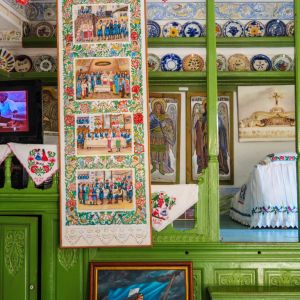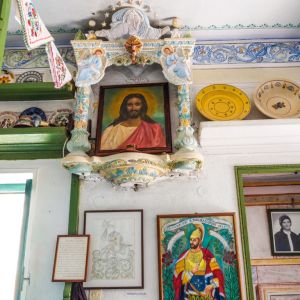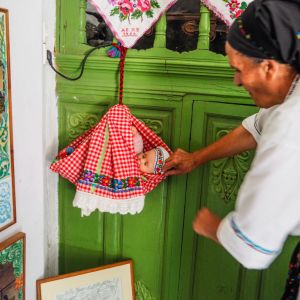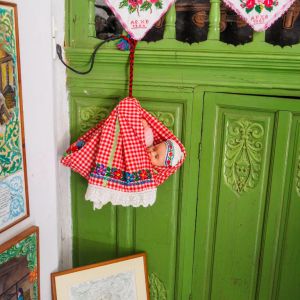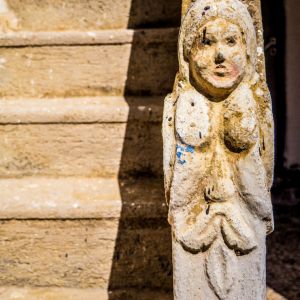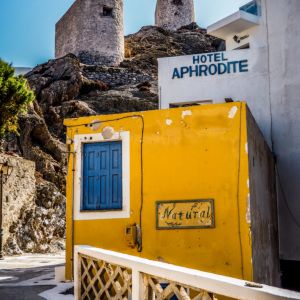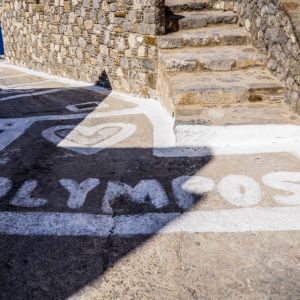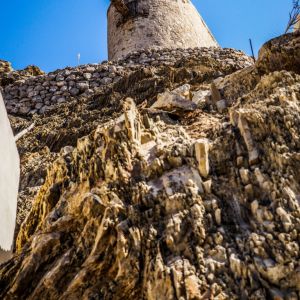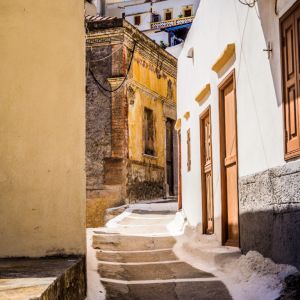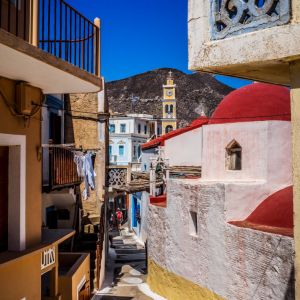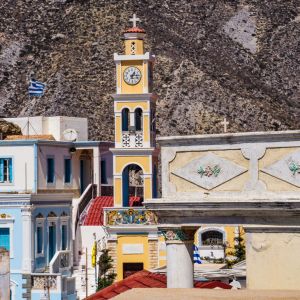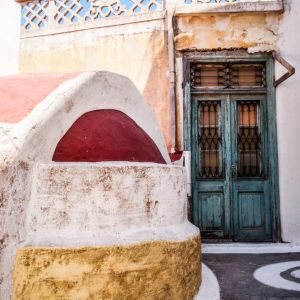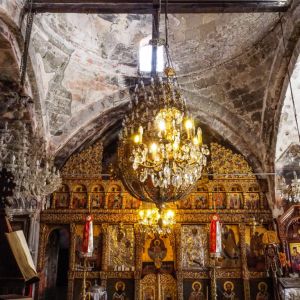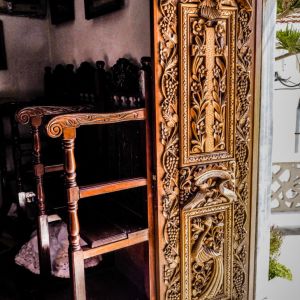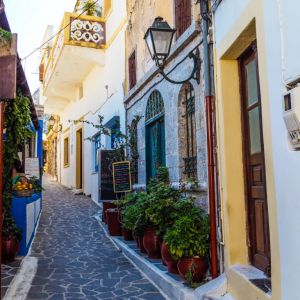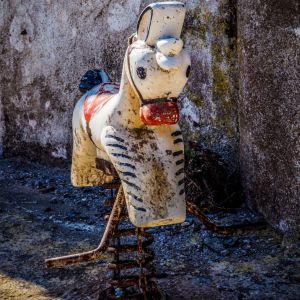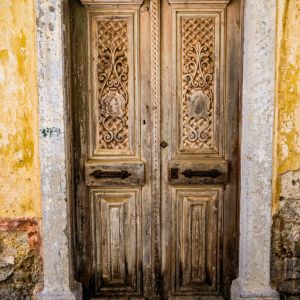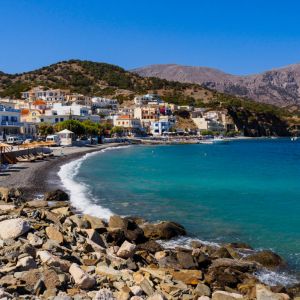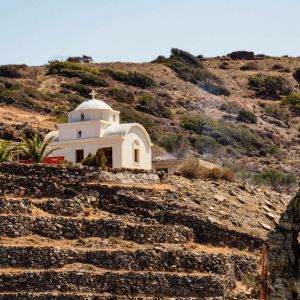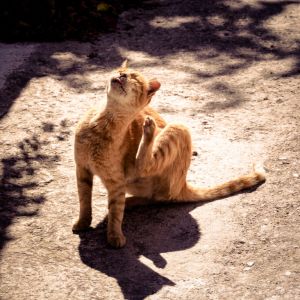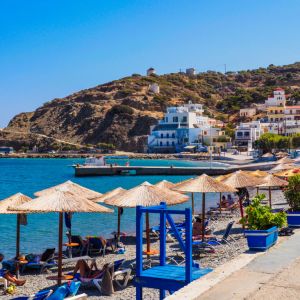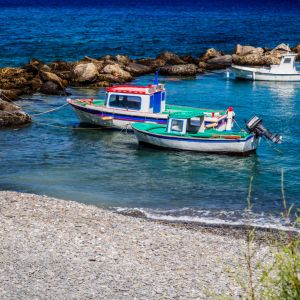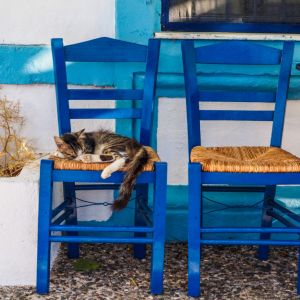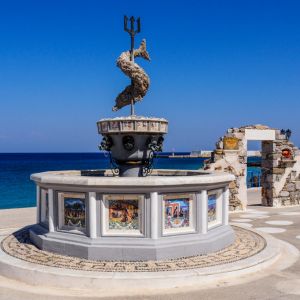Up to the Traditional Mountain Village Of Olympos
One of the most popular things to do on Karpathos apart from sampling the amazing beaches is to visit the mountain village of Olympos – and today was the day! The trip by public bus was 14 euros return for the 40+ kilometre journey to Olympos and also onto Diafani in the afternoon – all on the same bus ticket. The bus headed up into the mountains taking the same route to Apella with even more hair raising hair pin bends than before. One thing that stands out is how green the landscape is – pine trees springing up from every nook and cranny in the craggy mountainside. If Kasos was every joined to Karpathos in ancient history, then when they split – Karpathos took Kasos’s share of the fertile soil! There is still evidence of lots of abandoned terracing but here it gets lost in huge expanse of the landscape.
As the bus continued to climb up into the mountains it began to feel ‘other worldly’. The only signs of life that were evident were herds of mountain goats that roamed the cliffs – and the narrow road! Eventually Olympos reveals herself in all of her sparkling glory, beaming out against the dark rock!
After exiting the bus, our small group of 10 headed into the village. The first things you come across are a series of craft shops selling handcrafted leather, lace and produce such as local honey. Women in the traditional costumes of the village tempt you into their establishments with the unspoken promise of a photo opportunity! I found myself purchasing a traditional headscarf that I’ll probably never wear but I was enjoying my conversation with the lady who was telling me what Olympos was like in winter and how she’d spend this time sewing beads onto the headscarves. In and around the touristy hub are signs of an agricultural life with livestock in pens on the hill and pasta drying under the sun on tea towels on a wall.
I was really struck by the architectural features in the village – lots of plasterwork and painted frescoes adorning the exterior of the houses. Everywhere you will see the double headed eagle or phoenix in balconies and relief work over doorways. I’ve really never seen anything like it.
As I wandered the streets I saw a hand painted sign saying this way to the traditional bakery and windmills. I followed it around and as I descended ancient stone steps, past derelict houses I could smell the burning wood. A man was chopping more logs for the wood fired oven whilst his wife filled the oven with proven bread using a long paddle. I purchased two pastries and was offered the only seat on her doorstep whilst I ate.
I ventured forth past the windmills and on this side of the village you are offered breath taking views of the bay below.
It is easy to just get lost in yourself in these streets. There were times when my vertigo had a few screaming fits but this village really is unique and there is so much to explore here.
I more or less stumbled across the Museum of Vasili Hatzivasili, a local folk artist that specialised in the plasterwork and painted frescoes that I’d already seen about the village. His father who was also an artist had spent time on Kasos creating elaborate frescoes in the sea captains mansions. Oh I wish I’d have known all of this before I left Kasos! I’d love to go and trace his work.
The lady who tends the museum is his daughter and though she spoke no English and I very little Greek, we spent half an hour talking about the traditions all spelt out in the paintings and plasterwork in front of me. The embroidery work was made by herself and her mama from designs made by her father. She pointed to a video on an old tv screen and one of the paintings and told me that in the past cattle had been kept on the island of Saria to the North of Karpathos and seasonally, they would be herded across the straits alongside fishing boats. Saria is also where their olive trees would be harvested – but apparently no longer. Again she pointed out images on various paintings. I was interested to see the little hammocks that were used to put babies whilst the women worked the fields. I bought a book for 10 euros to read about this family of artists further.
This was a fascinating visit – and all for 2 euros. A couple of other tourists wandered in whilst I was there but wandered out again as soon as they were informed there was an entrance fee to the museum. Come on guys – it’s 2 euros! Well worth every cent!
Just before midday coachloads of tourists arrive – heavens knows what they paid for their trip but the advantage of coming by public bus is that it arrives before the masses! I spend the rest of my time going in the opposite direction of the tour groups and this helps me discover back alleyways that are off the beaten track!
At 2pm the bus leaves for Diafani – the other port town on the island as an optional visit all included in the price of the ticket. The bus returns to Olympos at 4pm for those that wished to stay. I opted for the visit to Diafani where we had one and a half hours to explore. Diafani really is a tiny port village that feels so different to Pigadia – very laid back and quiet. It has a few beach front tavernas and hotels/pensions. Here you will also see the local ladies wearing the traditional costume.
As you walk towards the port, you will find a fountain with paintings by Vasili Hatzivasili of local trades. Next to it is a stone wall with a plaster statue of an Olympian woman looking out to sea – waiting for her husband. Back in the other direction above one of the bars are more examples of his work in the form of a woman and her children looking out to sea and a decorative balustrade below.
Despite Olympos being a major tourist attraction on Karpathos, it is definitely worth the visit. I think this is a really unique village with a very interesting history and I’ll definitely be reading more about it! I think it would be absolutely amazing to spend more time here and get to see the more rural side of the village and especially to see some of the local festivals. Another time maybe?

